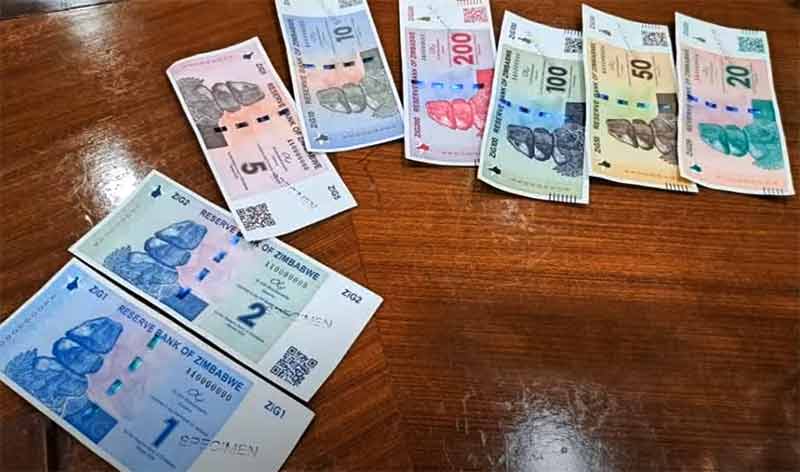ZIMBABWE. HERE IS THE ZIG
(April 17th, 2024)
HARARE. Here is the ZIG, the new Zimbabwean currency which, in the government’s intentions, should replace the national dollar by the end of the month, whose value was now lower than the paper it was printed on.
The new currency is pegged to gold and should be quoted at 13 ZIG for one US dollar: the Zimbabwean central bank, on the occasion of the launch of the new currency, reduced interest rates from 180% to 20%, in an attempt to revitalize a dying economy, also hit by hyperdrought which led the authorities to declare a state of emergency.
The announcement of the introduction of the new currency was given on 5 April and in theory from Monday 8 April the banks should have been able to offer their customers the new banknotes, but on the morning of that day the credit institutions they didn’t have enough for everyone who wanted them. In short, huge queues at bank branches and defeated people returning home without money.
The market was then told that prices were rising, while traders refused to accept the new coinage, preferring the US dollar for fear that between now and the end of the month, when the legal tender status of the national dollar ceases, the exchange rate will change again.
***
FREQUENT MONETARY REFORMS
Since 2008, this is the sixth monetary reform introduced in the country, to tackle the hyperinflation that has so far devastated the lives of Zimbabweans: on the other hand, while Robert G. Mugabe was in power the state had printed money without limits.
Mugabe, banned by the international community, often said: “If we have got any money, we will print it.”
this was what happened, causing a terrible devaluation.
Now, the governor of the central bank in Harare promises that no more money will be printed than necessary, but of course it shouldn’t believe everything that is declared, considered the recent past.
***
CHANGE MONEY
In ancient times, kings and emperors had some gold or silver scratched off coins to save the precious metal: this is what Nero did after the fire of Rome in 64 AD: the aim was to finance in a less onerous way for the state coffers the enormous expenses to be incurred to rebuild the city.
In modern times, several governments applied the most classic measure: the cancellation of zeros:
• in 1958, for example, De Gaule in France issued one new franc for 100 old francs, deleting two zeros;
• the Turkish government did something similar in 2006: new liras were issued that were worth a thousand of the old ones.
In South America, they went further but with mixed results:
• In Brazil, Fernando Henrique Cardoso (1994 – 2002) launched the “plan real” to replace Cruzeiro and Cruzado, currencies whose purchasing power had evaporated between the 1980s and 1990s; the measure was successful because the Brazilian economy achieved good results in the first decade of the 2000s;
• In Argentina, after the end of the military dictatorship (1976-83), the Austral was launched, but inflation soon devoured it.
It returned later to the Peso: president Carlos Saul Menem (1989-99) dollarized the economy: one Argentine Peso was equivalent to one US dollar.
In 1998, however, the symptoms of the crisis that would lead to the Corralito in December 2001 began to appear.
Consequently, currency changes always don’t improve the economy and struggle against the inflation if the structural reasons which produced it weren’t removed: indeed, the measure of throwing away the old currency to adopt a new one is often a simple warm cloth and soon the inflation, hidden under the carpet like dust, resurfaces more violently than before.
PIER LUIGI GIACOMONI

